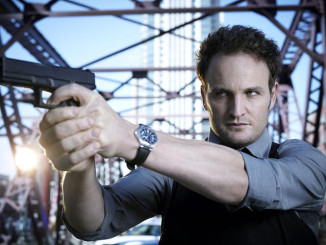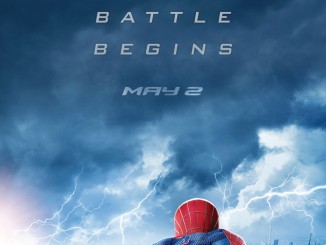 White House Down
White House Down
By James Vanderbilt
Draft dated March 1, 2012
When James Vanderbilt’s action script White House Down was sold for a record $3 million last month, it was described as “Die Hard in the White House.” And a read through of the screenplay reveals how accurate that description is. In both tone and story, this script owes much to John McTiernan’s 1988 blockbuster that elevated Bruce Willis from being a popular television star to movie megastar.
John Cale has skated through life mostly on good looks, charm and luck. He owes his current position as a Secret Service agent assigned to the Speaker of the House’s detail to having saved the Speaker’s nephew while on a tour of duty in Afghanistan. When asked about the act of heroism he shrugs it off with a glib “He owed me money,” a comment that doesn’t sit well with Agent Carol Finnerty when she interviews Cale for a spot on the team guarding the President of the United States.
But Cale has been not been able to just get by in his family life. He is separated from his wife and ten-year-old, budding policy wonk daughter Emily, the latter with whom he is having a hard time establishing any sort of relationship. In order to try and make a connection with her, Cale scores some exclusive White House tour tickets. Unfortunately, they pick the absolutely worst time for their visit – the moment when a group of terrorists attack the home of the President with the intent of taking hostage its most famous resident. Separated from Emily and the tour group in the confusing first moments of the assault, Cale finds himself having to save the group of hostages that his daughter is a part of as well as the Chief Executive.
When you take a step back, there are indeed some broad similarities between White House Down and Die Hard that are pretty hard to dismiss. Let’s break some of the highlights down by bullet points-
- You have heroes who are in some branch of law enforcement – Willis’s John McClane is a New York City cop while Cale is a Secret Service agent.
- Both Cale and McClain have a strained relationship with a family member that they are trying to repair when the action of the movie happens and of course, both family members are part of a group of people taken hostage. It is the need to save that loved one that drives the motivation behind many of their choices in each story and helps to provide a strand of emotional involvement for the audience. Of course, the resolution of each story sees that relationship repaired.
- The hostage crisis manufactured by the bad guys is just a blind for their true intent, breaking into a computer/computerized vault in the building’s basement.
- Each story’s hero is on their own for a good portion of the film with their only contact to the outside world being another law enforcement officer. Where Die Hard’s McClane had Sgt Al Powell as personified by actor Reginald VelJohnson, Cale has Finnerty with whom he is in contact with via a sat-phone. Finnerty proves to be of more help to Cale than Sgt. Al was allowed to be to McClain.
- At one point in each story an assault team attempts to storm the building and is brutaly massacred with the hero unable to stop it.
- There’s even an escape attempt by limo, though the one here across the White House lawn is far more spectacular than short-lived attempt made in Die Hard.
Despite, or maybe even because of, I’m not sure, the similarities to Die Hard I found myself enjoying the hell out of White House Down. Many writers try to create a wisecracking hero and often in falls on the actor to try and bring some snap to limp lines. But all of the wisecracks that Vanderbilt gives to Cale crackle on the page and many had me chuckling out loud, a rare feat. Additionally, the wisecracks come out of Cale’s character, his way of coping with the insane and stressful situation he has found himself in. They don’t feel grafted on just for the sake of having a witty line cap a scene.
This is not the first time that Vanderbilt has used humor to temper the action in a screenplay. His adaption of the comic book series The Losers has a similar tone, though it leaned a bit more towards the jokes than White House Down. And Vanderbilt is careful to never let the humor overpower the story. The villains’ menace is very much real and Vanderbilt does not hesitate to kill some sympathetic supporting characters when the story needs the tension ratcheted up another degree or two.
Although the actual takeover of the White House doesn’t happen until page 29 of the 142 page script, Vanderbilt makes sure that every moment building-up to the attack is important. Virtually every scene, line and action will have a payoff later on either in terms of plot or characterization. When a White House tour guide mentions a factoid about the historic building it sets up a story moment later on that feels honestly earned and not something that the screenwriter pulled out of the air at that moment. This is some tight, economical writing with not a line being wasted. Vanderbilt also manages to sketch the layout of the White House out with enough detail that we always have a good idea of the location and flow of the action through the story.
I should note though that I hope that all of the White House and Presidential security procedures that Vanderbilt details in the opening of the film are fictitious given the way that the villains of the script circumvent them with relative ease.
So despite the similarities to Die Hard, White House Down stands on its own as a thrilling action story. It’s a throwback to the blockbuster action pictures of the late 1980s and 1990s, where heroes like Bruce Willis, Arnold Schwarzenegger and Harrison Ford would cause untold amounts of property damage while trying to stop far more heavily armed bad guys. It has got a hero for whom the stakes are not only important but personal. Coupled with a smartly constructed script and you have a movie I can’t wait to see. The hiring of Roland Emmerich to direct the film certainly feels like a good move.
Let’s just hope if there are further cinematic adventures of Cale in the future, they don’t try and continue to ape the Die Hard franchise with our hero finding himself fending off terrorist attacks while visiting other famous seats of power like Buckingham Palace or the Kremlin in future films.





[…] Script and movie critic Rich Drees finds it quite easy to notice the resemblances between the ‘80s blockbuster and the upcoming White House Down. For example, “Both Cale and McClain have a strained relationship with a family member that they are trying to repair when the action of the movie happens and of course, both family members are part of a group of people taken hostage,” Drees says on Film Buff Online […]